Xuanze Chen
Mixture of Decoupled Message Passing Experts with Entropy Constraint for General Node Classification
Feb 12, 2025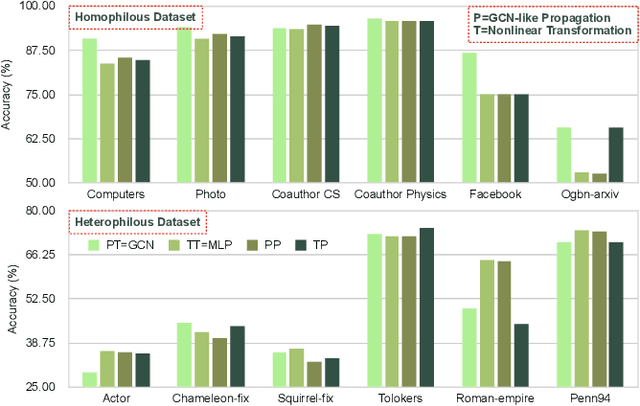
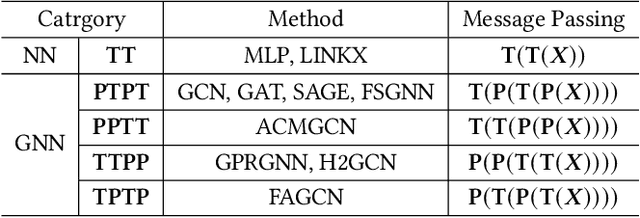

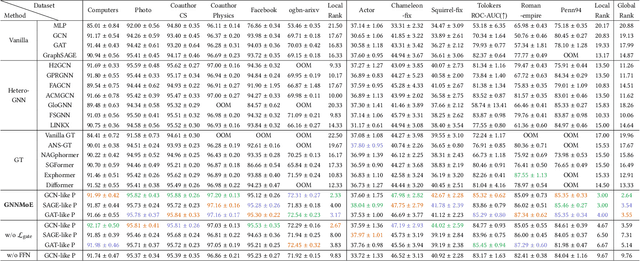
Abstract:The varying degrees of homophily and heterophily in real-world graphs persistently constrain the universality of graph neural networks (GNNs) for node classification. Adopting a data-centric perspective, this work reveals an inherent preference of different graphs towards distinct message encoding schemes: homophilous graphs favor local propagation, while heterophilous graphs exhibit preference for flexible combinations of propagation and transformation. To address this, we propose GNNMoE, a universal node classification framework based on the Mixture-of-Experts (MoE) mechanism. The framework first constructs diverse message-passing experts through recombination of fine-grained encoding operators, then designs soft and hard gating layers to allocate the most suitable expert networks for each node's representation learning, thereby enhancing both model expressiveness and adaptability to diverse graphs. Furthermore, considering that soft gating might introduce encoding noise in homophilous scenarios, we introduce an entropy constraint to guide sharpening of soft gates, achieving organic integration of weighted combination and Top-K selection. Extensive experiments demonstrate that GNNMoE significantly outperforms mainstream GNNs, heterophilous GNNs, and graph transformers in both node classification performance and universality across diverse graph datasets.
Mixture of Experts Meets Decoupled Message Passing: Towards General and Adaptive Node Classification
Dec 11, 2024
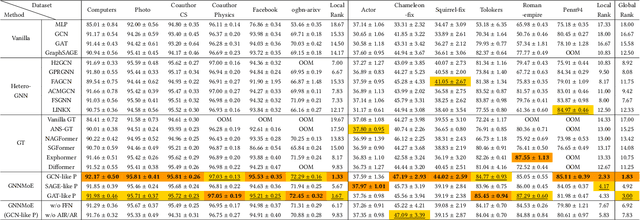


Abstract:Graph neural networks excel at graph representation learning but struggle with heterophilous data and long-range dependencies. And graph transformers address these issues through self-attention, yet face scalability and noise challenges on large-scale graphs. To overcome these limitations, we propose GNNMoE, a universal model architecture for node classification. This architecture flexibly combines fine-grained message-passing operations with a mixture-of-experts mechanism to build feature encoding blocks. Furthermore, by incorporating soft and hard gating layers to assign the most suitable expert networks to each node, we enhance the model's expressive power and adaptability to different graph types. In addition, we introduce adaptive residual connections and an enhanced FFN module into GNNMoE, further improving the expressiveness of node representation. Extensive experimental results demonstrate that GNNMoE performs exceptionally well across various types of graph data, effectively alleviating the over-smoothing issue and global noise, enhancing model robustness and adaptability, while also ensuring computational efficiency on large-scale graphs.
Lateral Movement Detection via Time-aware Subgraph Classification on Authentication Logs
Nov 15, 2024Abstract:Lateral movement is a crucial component of advanced persistent threat (APT) attacks in networks. Attackers exploit security vulnerabilities in internal networks or IoT devices, expanding their control after initial infiltration to steal sensitive data or carry out other malicious activities, posing a serious threat to system security. Existing research suggests that attackers generally employ seemingly unrelated operations to mask their malicious intentions, thereby evading existing lateral movement detection methods and hiding their intrusion traces. In this regard, we analyze host authentication log data from a graph perspective and propose a multi-scale lateral movement detection framework called LMDetect. The main workflow of this framework proceeds as follows: 1) Construct a heterogeneous multigraph from host authentication log data to strengthen the correlations among internal system entities; 2) Design a time-aware subgraph generator to extract subgraphs centered on authentication events from the heterogeneous authentication multigraph; 3) Design a multi-scale attention encoder that leverages both local and global attention to capture hidden anomalous behavior patterns in the authentication subgraphs, thereby achieving lateral movement detection. Extensive experiments on two real-world authentication log datasets demonstrate the effectiveness and superiority of our framework in detecting lateral movement behaviors.
Rethinking Graph Transformer Architecture Design for Node Classification
Oct 15, 2024


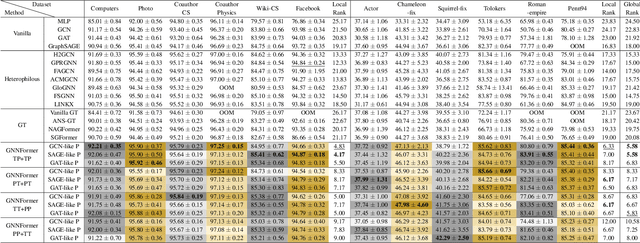
Abstract:Graph Transformer (GT), as a special type of Graph Neural Networks (GNNs), utilizes multi-head attention to facilitate high-order message passing. However, this also imposes several limitations in node classification applications: 1) nodes are susceptible to global noise; 2) self-attention computation cannot scale well to large graphs. In this work, we conduct extensive observational experiments to explore the adaptability of the GT architecture in node classification tasks and draw several conclusions: the current multi-head self-attention module in GT can be completely replaceable, while the feed-forward neural network module proves to be valuable. Based on this, we decouple the propagation (P) and transformation (T) of GNNs and explore a powerful GT architecture, named GNNFormer, which is based on the P/T combination message passing and adapted for node classification in both homophilous and heterophilous scenarios. Extensive experiments on 12 benchmark datasets demonstrate that our proposed GT architecture can effectively adapt to node classification tasks without being affected by global noise and computational efficiency limitations.
Network Anomaly Traffic Detection via Multi-view Feature Fusion
Sep 12, 2024Abstract:Traditional anomalous traffic detection methods are based on single-view analysis, which has obvious limitations in dealing with complex attacks and encrypted communications. In this regard, we propose a Multi-view Feature Fusion (MuFF) method for network anomaly traffic detection. MuFF models the temporal and interactive relationships of packets in network traffic based on the temporal and interactive viewpoints respectively. It learns temporal and interactive features. These features are then fused from different perspectives for anomaly traffic detection. Extensive experiments on six real traffic datasets show that MuFF has excellent performance in network anomalous traffic detection, which makes up for the shortcomings of detection under a single perspective.
 Add to Chrome
Add to Chrome Add to Firefox
Add to Firefox Add to Edge
Add to Edge